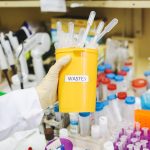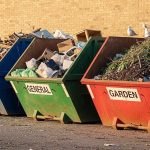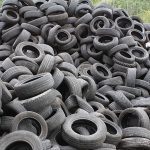A Guide to Proper Waste Segregation
Recycling is one measure that can prevent waste from occurring and help to protect the environment, and Australia is a country which has made significant steps in waste management, and waste segregation has become a very important aspect to help with recycling efforts. One problem is that some homes don’t sort their waste properly, which results in contamination, which causes problems with the recycling process. This article will offer ways in which Australians can change their habits of waste segregation at home, which in turn can minimise environmental pollution by reducing waste delivered to landfill sites.
Why Address Waste Segregation
Waste segregation helps avoid cross-contamination which occurs when recyclable materials and general waste come into contact with each other in the recycling stream. Poor waste management allows certain foods and materials to contaminate recyclable waste, and the process of segregating waste is beneficial to recycling because it makes it less expensive and easier for the population to recycle their waste more effectively. The Australian Bureau of Statistics (ABS) estimated that Australia only recycled 60% of the waste it produced in the years 2020-2021, and by encouraging households to improve their waste segregation practices, Australians can improve upon this figure.
Understanding Ways to Identify Waste Segregation
The first step in achieving proper waste segregation is the identification of the different waste streams available within the household. In Australia, there are generally three categories of bins available, which include the yellow lid bin for recyclables, green lid bin for organic waste, and red lid bin for general waste. To ensure proper waste management, it is important to learn what items can be placed in each of these bins.
The Yellow Lid Bin
The yellow lid bin serves as the designated bin for recyclables, including paper, cardboard, glass bottles, aluminium cans, and hard plastics. With this bin it is important to not include soft plastic materials such as plastic bags and wrappers. If you need to dispose of soft plastics we recommend utilising specialised facilities such as the Adelaide Waste and Recycling Centre.
The Green Lid bin
The green lid bin is dedicated to organic waste that includes garden trimmings, food wastage, or items that are compostable. Residents are encouraged to make use of this bin for food waste to help with the reduction of organic material taken to landfill, which itself produces methane and other greenhouse gas emissions.
The Red Lid Bin
The red lid bin is mainly for general waste which cannot be recycled, such as clothing, polystyrene, medication byproducts, and other non-recyclable items. This is the bin for anything that cannot be composted or recycled.
Tip: Do your own research or contact your local council for their recommended waste disposal procedures regarding what can and cannot be recycled.
Reducing Contamination in Recycling
The contamination of the recycling bin is one of the major barriers to achieving successful waste segregation. Contaminated products are a prevalent source of contamination in recyclables. To avoid this, we recommend that you wipe clean containers and plastic bags, which may be soiled with food and can spoil an entire load of recyclables.
To Obtain Clean Recycling, Do:
Rinse your containers: If there is any food or liquid present in plastic, glass or metal containers, rinse them out before placing the containers in the recycling bin.
Remove lids: Items such as bottle caps, jar lids, or tub lids are normally made from plastics that differ from the containers that they come from. It is advisable to remove them before recycling.
Avoid soft plastics: Kerbside recycling bins do not accept soft plastics such as plastic bags and packets, packaging, etc. in which case, store them and take them to dedicated recycling facilities like the Adelaide Waste and Recycling Centre.
Contamination is one reason recyclable materials get disposed of in landfills, and this is mostly caused when people neglect recycling regulations including proper sorting.
Composting and Green Waste
Recycling waste is not the only way to manage the amount of waste that goes into landfills. Food waste or garden waste composing can also be added to soil rather than being disposed of.
In Australia, almost all households are provided with a green-lid bin for their organic waste, but most of the time, this is where composting efforts stop. You can transform food scraps, coffee grounds, and garden clippings into a healthy, rich compost for your garden.
Tip: Never put any meat, dairy, or fatty foods into the compost, as this invites pests and smells. Banana peels, eggshells, and garden/vegetation waste are ideal for compost.
Tip: If this is the first time that you want to compost, consider buying a compost bin or a worm farm. These are an excellent way to generate organic waste.
Making a Positive Impact with Effective Waste Segregation
Waste segregation is important as it helps in the maximisation of recycling and to control waste pollution. Australians can obtain a cleaner and more sustainable environment by knowing their waste streams, minimising contamination, and composting their organic waste. To ensure compliance, people can obtain information through their local council as recycling regulations can differ. Even small gains made through better waste segregation can improve the environment. To learn more about good waste management practices in Adelaide you can contact us on +61 8 8295 5077 or via our website.
Adelaide Waste and Recycling Centre
Our friendly operators are available at the AWRC if you need to clarify any further information.


